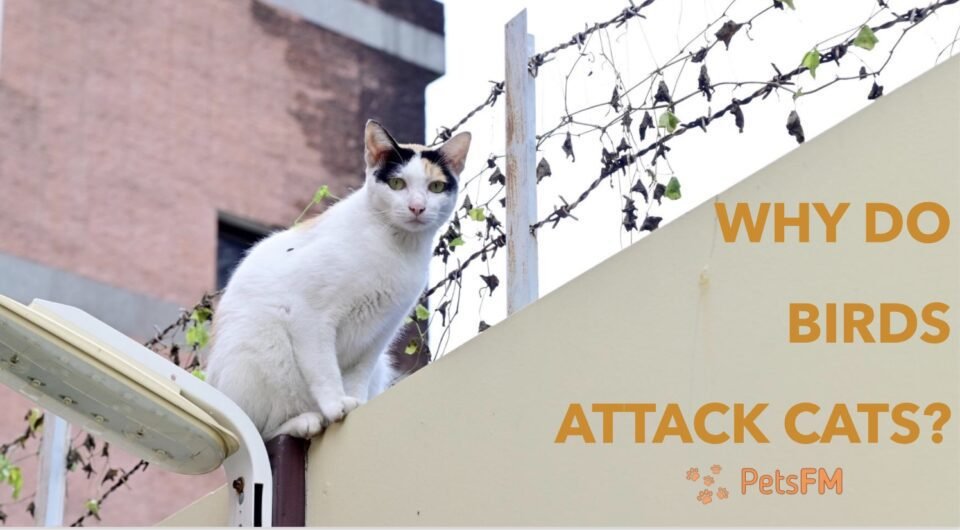


Why Are Birds So Cute? 10 Reasons Why Birds Are Cutest
September 17, 2023


Why Do Birds Attack Humans? Understanding the Reasons
September 19, 2023Domestic and wild cats are known to prey on birds, particularly the smaller species. If you have a cat, you might have experienced moments when they bring hunted birds as gifts or toys into your home. As a result, these adorable pets are also regarded as terrestrial predators of birds.
But what if the tables were turned, and a bird attacked a cat? Is such a scenario possible? Let’s see!
Dive into the unexpected encounters, understand the intricate relationships, and delve into the ongoing fascination this confrontation between these two formidable beings holds for cat lovers and bird enthusiasts.
Similar Read: Why Do Birds Get Aggressive? What You Need to Know?
Why Do Birds Attack Cats?
Birds may target cats if they perceive them as threats to their nests, eggs, or young ones. If cats provoke these birds, the birds have the ability to remember the specific cats and may retaliate.


Birds attacking Cats
However, birds are less likely to attack fully grown cats without provocation. Additionally, certain birds of prey view cats and other small creatures as potential meals.
Also Read: How Do Birds Clean Themselves – Understanding Avian Hygiene
Understanding The Bird-Cat Interaction
Understanding the dynamics between birds and cats is crucial for pet care and conservation efforts.
Awareness of bird species that might threaten their pets enables cat owners to take precautions to ensure their cat’s safety.
For those involved in wildlife conservation, learning the effects of predation by domesticated animals, such as cats, on local ecosystems is vital for preserving biodiversity.


Understanding The Bird-Cat Interaction
Left unchecked, cats are recognized predators that can considerably affect indigenous bird populations. Beyond these practical considerations, delving into bird-cat relationships offers intriguing insights into animal behavior and ecological patterns.
Hence, in the following segments, we will delve deeper into the instances of birds targeting cats, the factors that drive these encounters, and strategies to prevent bird assaults on cats.
Similar Read: Why Do Birds Attack Humans? Understanding the Reasons
Factors Behind Birds Attacking Cats
Several elements can shape the dynamics and intensity of interactions between birds and cats:
1: Physical attributes of the cat and bird
The cat and the bird’s physical size and capability are significant in their interactions. For instance, birds that outsize cats, like eagles, hawks, or owls, might perceive cats as possible prey.
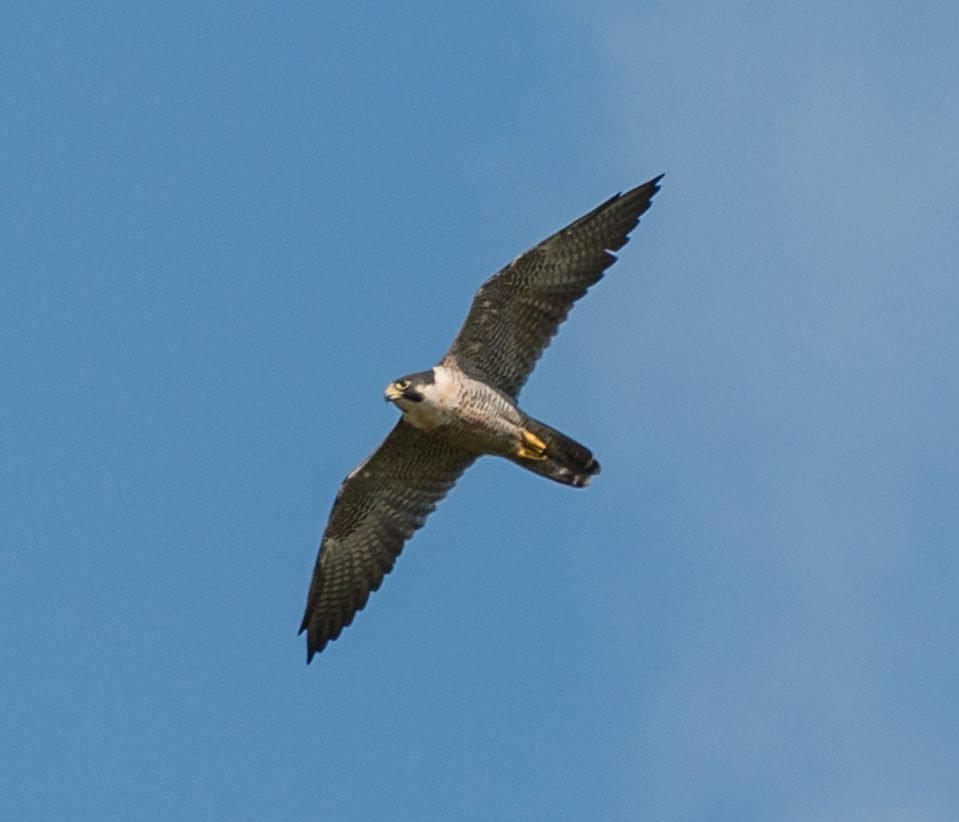

Conversely, the presence of a large cat can deter smaller birds like sparrows or finches due to intimidation.
2: Outdoor versus indoor cats
Typically, cats that roam outdoors are bulkier than their indoor counterparts because they can access a broader range of food resources in the open. As a result, these more robust outdoor cats could pose a heightened threat to the birds inhabiting their surroundings.


Indoor Cat
3: Overlap of Living Spaces
When birds and cats share habitats, it can increase tensions and lead birds to attack cats or vice versa. For instance, when an outdoor cat frequently visits regions populated by certain bird species during their breeding season, it could provoke unfavorable encounters.
Being territorial in nature, cats not only guard their domains but also travel specific regions, leading to potential conflicts with birds and other creatures sharing the same spaces.
4: Availability of Food Sources
The abundance or scarcity of prey profoundly affects the dynamics between birds and cats. In areas with high availability of natural food like insects or mice, non-predatory birds might not view domestic cats as potential threats, given the plethora of alternative food choices.
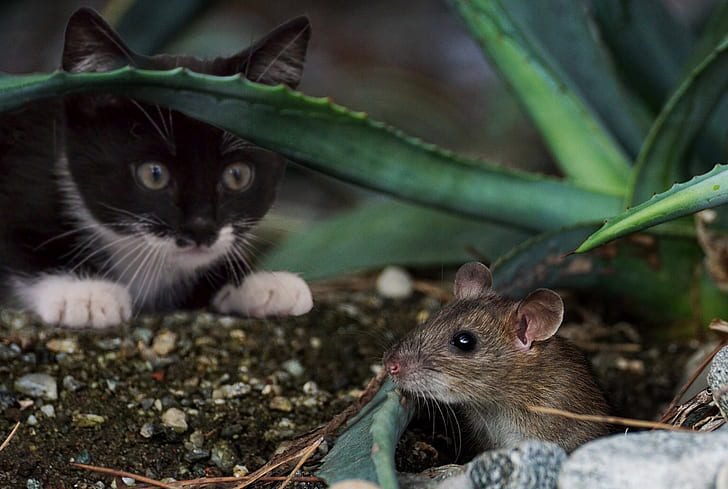

Cat and Mice
On the other hand, in regions with reduced food supplies, the chances of attack between birds and cats can rise. Opportunistic in their hunting habits, cats might resort to targeting birds when other prey becomes rare.
5: Bird Varieties and Their Characteristics
Different avian species react to cats in different ways. For instance, certain birds, such as mockingbirds or killdeers, might display strong tendencies when cats venture too close to their nests or territories.
Conversely, species like doves or pigeons are more inclined to flee in the face of predatory threats.
Editor’s Pick: Why Are Birds So Cute? 10 Reasons Why Birds Are Cutest
Examples Of Birds That Chase Cats
Here are some birds that aren’t easily intimidated by cats:
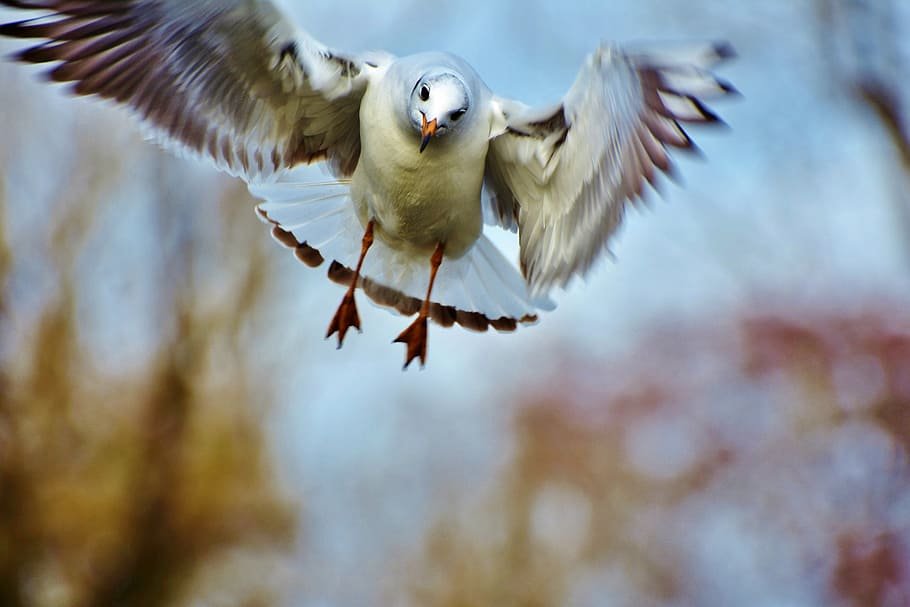

- Red-Tailed Hawks: These birds of prey have keen eyesight and sharp talons, making them brutal hunters. While they mainly prey on rodents, a small cat could be at risk, especially from larger hawk species.
- Eagles: Among the extreme predators of the bird world, some eagles, like the golden eagle, have been known to take down animals much larger than cats. While it’s rare for an eagle to target a cat, it’s not outside the domain of possibility.
- Great Horned Owls: While they primarily hunt at night, some more giant owls, such as the great horned owl, can and will prey on small mammals, including cats, if the opportunity arises.
- Crows and Ravens: While these birds don’t typically prey on cats, they are very territorial and exceptionally smart. If a cat gets too close to their nests or young ones, crows or ravens won’t hesitate to dive-bomb or harass the intruder to drive them away. Sometimes, these species also chase cats just for fun when it is not their breeding season.
- Swans and Geese: These birds are not predators of cats but are pretty protective of their territory and offspring. Their large size and strong wings can pose a genuine threat to cats if provoked.
- Magpies: Known for their intelligence and boldness, magpies can become aggressive, especially during breeding season. They will defend their nests and can engage in aerial attacks on perceived threats, including cats.
- Mockingbirds: Especially protective during their breeding season, mockingbirds are known to be fearless defenders of their nests. They will not hesitate to confront cats or larger animals that come too close.
- Blue Jays: Like mockingbirds, blue jays are powerful birds, particularly when defending their territory or offspring. They’re known to swoop down on perceived threats, cats included.
- Seagulls: While not typical predators of cats, seagulls can be territorial, especially around nesting sites. If they feel threatened, they can become aggressive, using their numbers and size to their advantage.
Also, Read why Why Do Birds Have Claws? The Real Reason Why!
How To Prevent Bird Attack On Cats?
You can take the following steps to prevent your pet cat from being attacked or intimidated by birds.
1: Maintain an Indoor Environment for Your Cat
The most common reason birds attack cats is because they are easy targets for birds. The simplest way to prevent potential bird and cat encounters is to have your pet friend remain indoors. This shields birds from predation and ensures your cat is safe from other external threats, such as traffic or other animals.


Cats Outdoor
Even indoors, cats can indulge in many activities, including playing with toys, scratching posts, and climbing structures, and engaging in interactive sessions with their caretakers.
2: Ensure a Secure Outdoor Zone for Your Cat
Creating a safe environment is vital if you don’t want birds attacking your cat but prefer your cat to get some outdoor exposure. Secure outdoor zone for your cat. This could be a walled garden or an enclosed terrace, ensuring the cat can’t venture beyond these boundaries.
Consider investing in or crafting a ‘catio’ – an enclosed outdoor space designed for feline safety. Equip it with toys and climbing aids to keep your cat entertained.
3: Implement Bird Deterrents
Introducing deterrents can be effective in discouraging birds attacking cats. Motion-sensitive sprinklers can scare off birds from cat-frequented zones. Meanwhile, shiny tape or balloons can deter birds from approaching specific areas.
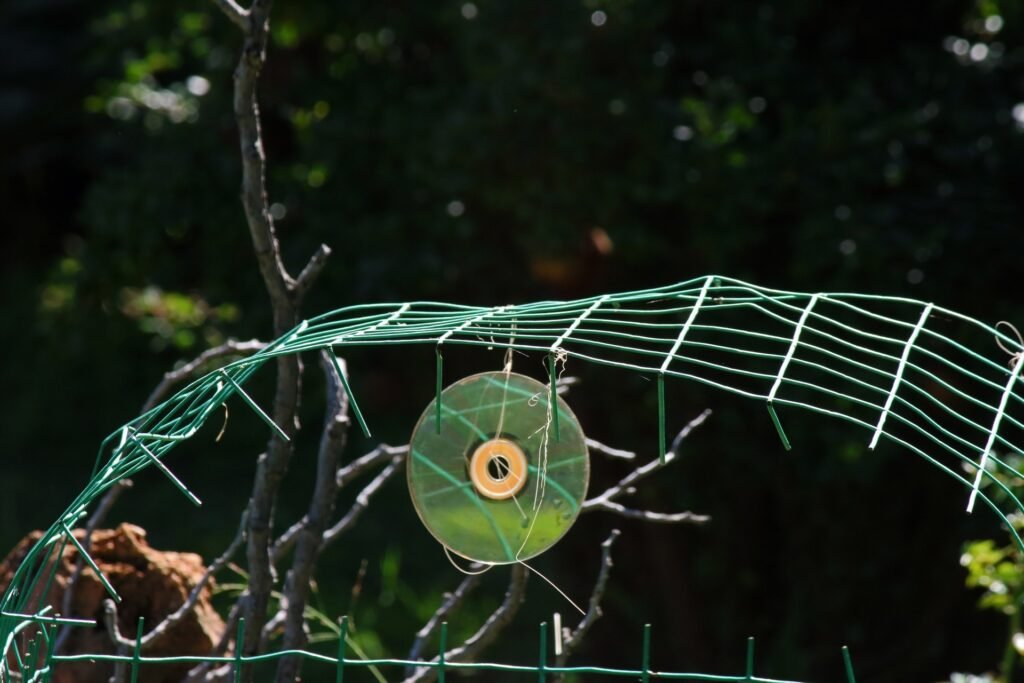

Bird Detterent
Sound devices, emitting high-pitched frequencies that irritate birds but remain inaudible to humans, can also keep avian visitors at bay.
4: Familiarize Yourself with Local Avian Species
Gaining knowledge about the local bird population and their behavior patterns is crucial to avoid potential bird-cat clashes.
Some birds might exhibit more aggressive behavior towards cats, while others could be more at risk due to decreasing numbers or habitat loss.
Being aware of the avian species around you and their characteristics can help establish safety measures for your cat and the birds.
Recommended Reading:Why Do Some Birds Have Red Eyes? [EXPLAINED]
Final Thoughts
Birds might target cats for various reasons, often related to defending their young, nests, or territories. As natural bird hunters, cats can evoke a protective reaction from these avian creatures. Some bird species are inherently territorial, showing aggression towards perceived dangers.
An attack may arise from a bird’s innate curiosity or a misjudged view of the cat as a threat. Such behaviors highlight the complex interplay of the natural world, where the drive to survive shapes behaviors.
Grasping these interactions can promote harmonious living and highlight the significance of honoring natural habitats. As we delve deeper into nature’s mysteries, we must recognize and value the fragile equilibrium among our ecosystems’ various inhabitants.
